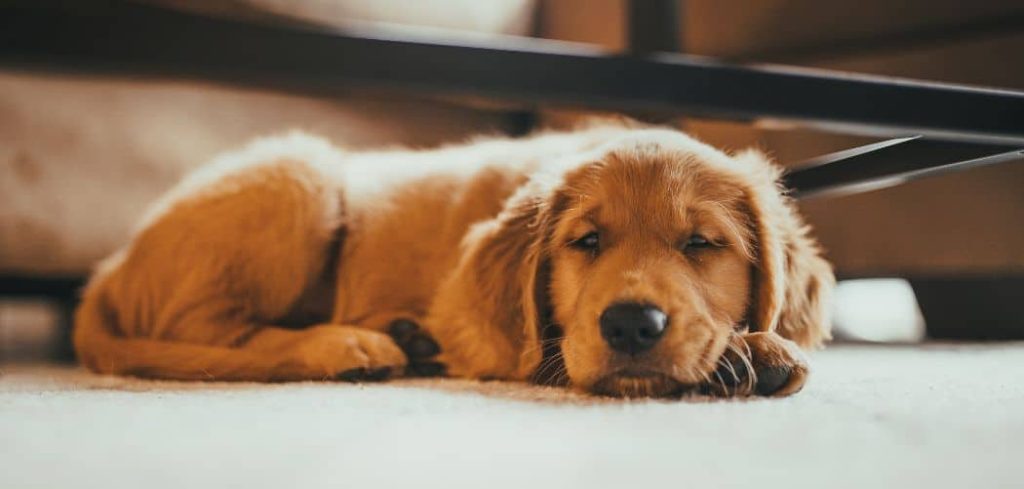It’s always concerning when a dog’s appetite suddenly changes, especially if paired with unusual stool. Seeing mucus in dog poop and noticing a loss of appetite can point to underlying issues that need attention.
We outline the common causes of a dog having mucus in its poop and not eating, what you can do at home, and when to seek veterinary help.
Table of Contents
Mucus in Dog Poop and Not Eating — Why It Happens
Mucus in a dog’s stool combined with not eating is often a sign of digestive distress or an illness affecting the gastrointestinal tract. Common causes include colitis, intestinal parasites, infections, pancreatitis, dietary indiscretion, or more serious issues like inflammatory bowel disease or cancer.
Because a lack of appetite is usually a signal that a dog is unwell, this combination of symptoms should not be ignored. Early intervention can prevent worsening illness and help your dog recover sooner.

Mucus in Dog Poop and Not Eating: Common Causes
Colitis
Colitis is inflammation of the colon, and one of the hallmark signs is mucus in the stool.
When paired with not eating, it often means the digestive tract is irritated and uncomfortable.
Dogs may also show straining during bowel movements, diarrhea, or small amounts of blood in their stool.
Colitis can be triggered by stress, infections, or dietary changes. If not treated, it can quickly lead to dehydration and further loss of appetite.
Read more: Dog Diarrhea and Not Eating (Possible causes explained)
Intestinal Parasites
Worms and protozoa such as giardia can damage the intestinal lining, leading to mucus in the stool.
At the same time, parasites drain nutrients and make the digestive process painful, which may cause a dog to stop eating.
Puppies are particularly vulnerable, but adult dogs can also be affected. Left untreated, parasites can lead to weight loss, lethargy, and serious nutritional deficiencies.
Gastrointestinal Infections
Bacterial or viral infections in the digestive tract can cause irritation, inflammation, and mucus production in the stool.
When the infection is severe enough, dogs may also lose their appetite due to nausea, abdominal pain, or fever.
Infections like parvovirus can be life-threatening, especially in younger or unvaccinated dogs, so these symptoms together should always be taken seriously.
Pancreatitis
Pancreatitis is inflammation of the pancreas, often triggered by fatty foods or underlying metabolic issues.
The condition can lead to nausea, abdominal pain, vomiting, and refusal to eat.
It also disrupts the normal digestion of food, which may cause mucus to appear in the stool. Dogs with pancreatitis may appear restless, hunch their back in pain, or show lethargy. This is a serious condition requiring immediate veterinary care.
Inflammatory Bowel Disease (IBD)
IBD occurs when a dog’s immune system overreacts to food or bacteria in the gut, causing chronic inflammation.
This inflammation can lead to mucus in the stool, poor absorption of nutrients, and appetite loss. Over time, affected dogs may lose weight, become lethargic, and develop chronic diarrhea.
Managing IBD typically requires dietary changes and medication under a vet’s guidance.
Cancer of the Digestive Tract
Though less common, tumors in the stomach or intestines can produce mucus in the stool and reduce appetite.
Dogs may also vomit, lose weight rapidly, or show signs of abdominal discomfort. Early diagnosis is critical because digestive cancers can progress quickly, but treatment options such as surgery, medication, or supportive care may help extend and improve quality of life.
Related: Mucus in Dog Poop After Changing Food (Here’s why)
What to Do If Your Dog Has Mucus in Their Poop and Not Eating
If your dog shows these symptoms, the first step is to withhold food for 12–24 hours while still providing access to water.
This gives the digestive tract time to rest. Afterward, you can offer a bland diet such as boiled chicken and rice in small portions. Monitor your dog closely for improvement.
Hydration is essential, as both mucus in stool and appetite loss can lead to dehydration. Encourage drinking with fresh water or offer an electrolyte solution made for pets.
Avoid giving treats, fatty foods, or human leftovers, as these may worsen digestive upset. Keep your dog comfortable and limit activity until they regain strength.
If symptoms persist beyond a day, or worsen with additional signs such as vomiting, lethargy, or blood in stool, veterinary care is necessary. Do not try to treat serious conditions at home, as underlying issues may need specific medications or diagnostics.
When to Call or Visit Your Vet
Contact your vet right away if your dog’s stool continues to contain mucus and they refuse food for longer than 24 hours. Loss of appetite is one of the strongest signals that a dog is unwell.
Seek urgent veterinary attention if there is blood in the stool, repeated vomiting, fever, or signs of pain such as whining, restlessness, or a hunched posture. Puppies, seniors, or dogs with pre-existing health conditions should be seen even sooner, as they can deteriorate quickly.
Persistent mucus, diarrhea, or anorexia should never be ignored. Only a veterinarian can determine whether the cause is minor or a more serious condition that requires immediate treatment.
Read more: Dog Lethargic and Not Eating (What you should know)
Key Takeaway
Mucus in dog poop and not eating are concerning symptoms that often signal digestive upset or more serious illness. While mild cases may resolve with rest and a bland diet, ongoing symptoms require veterinary evaluation.
Paying attention to these warning signs and acting quickly can make all the difference in your dog’s recovery.
Trust your instincts, keep your dog comfortable, and don’t hesitate to call your vet if things don’t improve.
